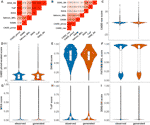

Laboratory and imaging studies should be ordered for patients with syncope only if clinically indicated by the history and physical examination. Patients presenting with syncope should have orthostatic blood pressure measurements and standard 12-lead electrocardiography. Patients with syncope and evidence of congestive heart failure or structural heart disease, abnormal electrocardiographic findings, or a family history of sudden death should be admitted to the hospital for emergent evaluation. Patients who present with presyncope should be evaluated similarly to those who present with syncope.

Cardiac syncope may require cardiac device placement or ablation. The treatment of neurally mediated and orthostatic hypotension syncope is largely supportive, although severe cases may require pharmacotherapy. In cases of unexplained syncope, provocative testing and prolonged electrocardiographic monitoring strategies can be diagnostic. High-risk patients with cardiovascular or structural heart disease, history concerning for arrhythmia, abnormal electrocardiographic findings, or severe comorbidities should be admitted to the hospital for further evaluation. Low-risk patients with a single episode of syncope can often be reassured with no further investigation. Several comparable clinical decision rules can be used to assess the short-term risk of death and the need for hospital admission. Laboratory testing and neuroimaging have a low diagnostic yield and should be ordered only if clinically indicated. The initial evaluation may diagnose up to 50% of patients and allows immediate short-term risk stratification. The initial assessment for all patients presenting with syncope includes a detailed history, physical examination, and electrocardiography. A standardized approach to syncope evaluation reduces hospital admissions and medical costs, and increases diagnostic accuracy. Patients with presyncope have similar prognoses to those with syncope and should undergo a similar evaluation. Neurally mediated syncope is the most common type and has a benign course, whereas cardiac syncope is associated with increased morbidity and mortality. Syncope is classified as neurally mediated, cardiac, and orthostatic hypotension. It accounts for 1% to 1.5% of emergency department visits, resulting in high hospital admission rates and significant medical costs. Syncope is an abrupt and transient loss of consciousness caused by cerebral hypoperfusion.


 0 kommentar(er)
0 kommentar(er)
